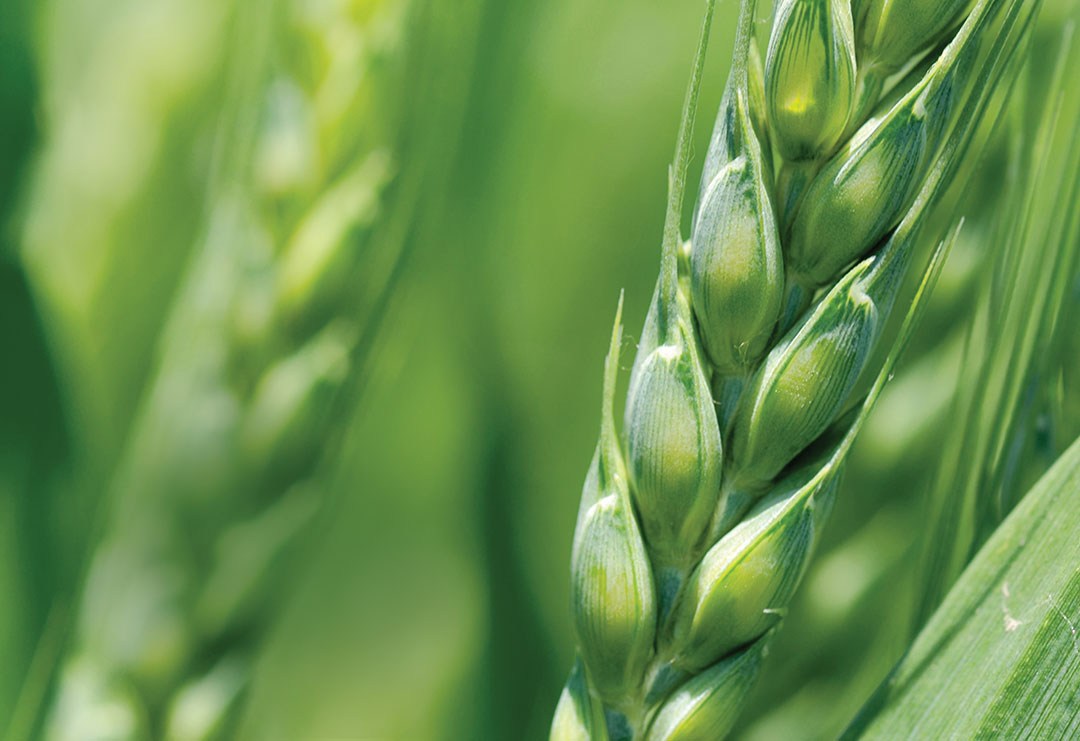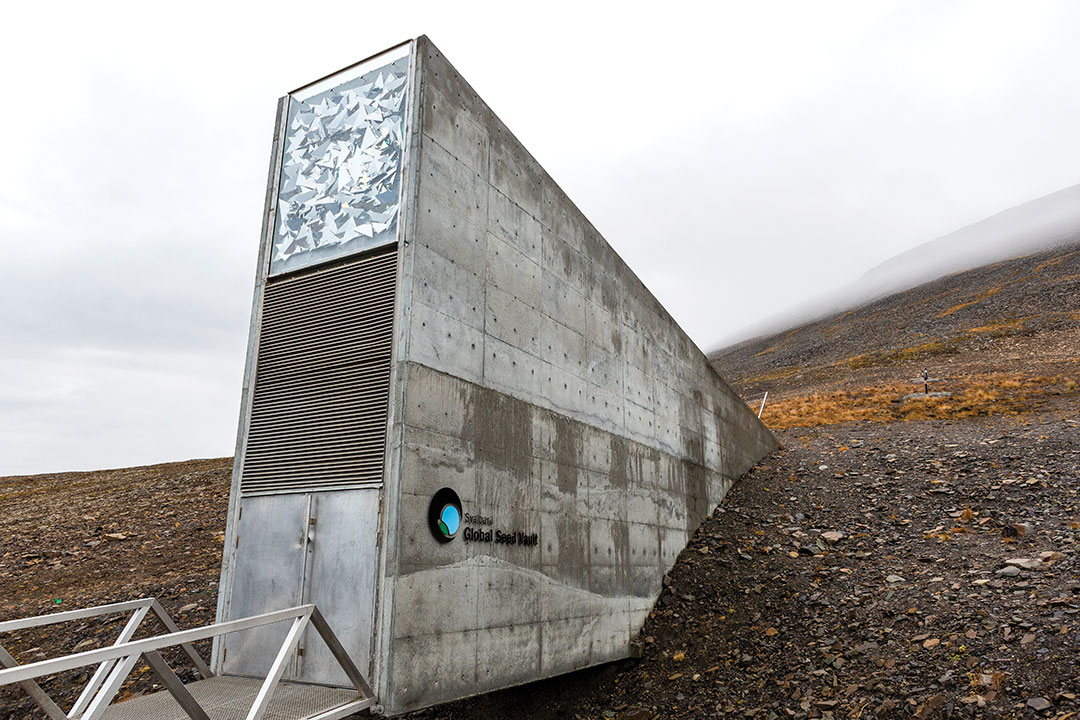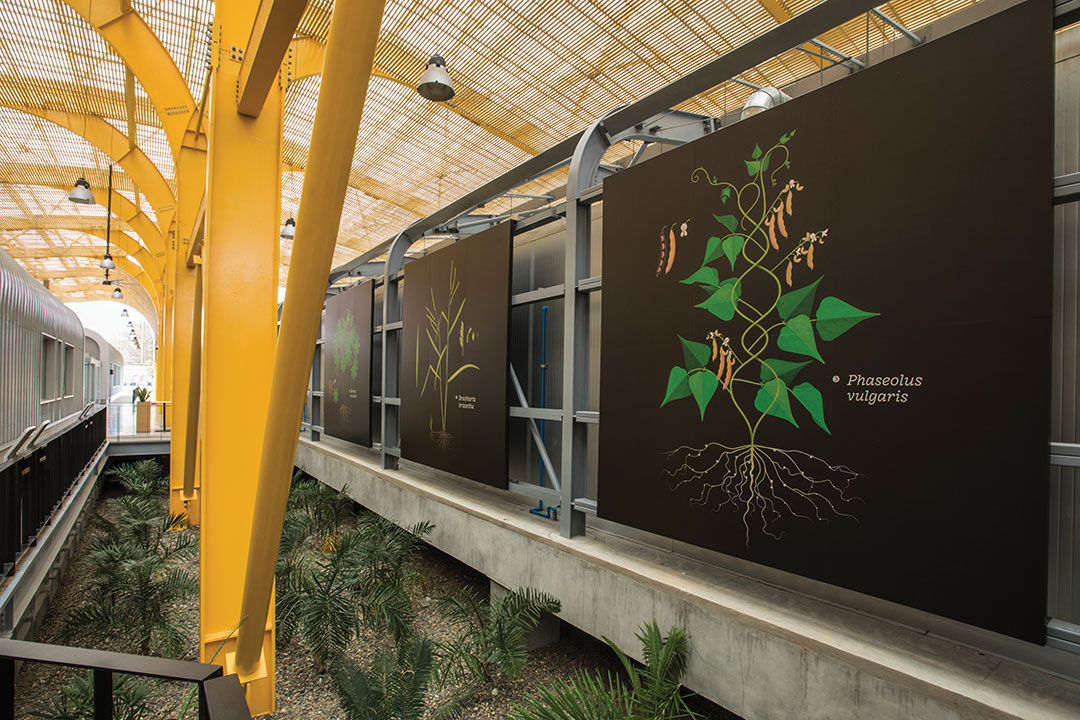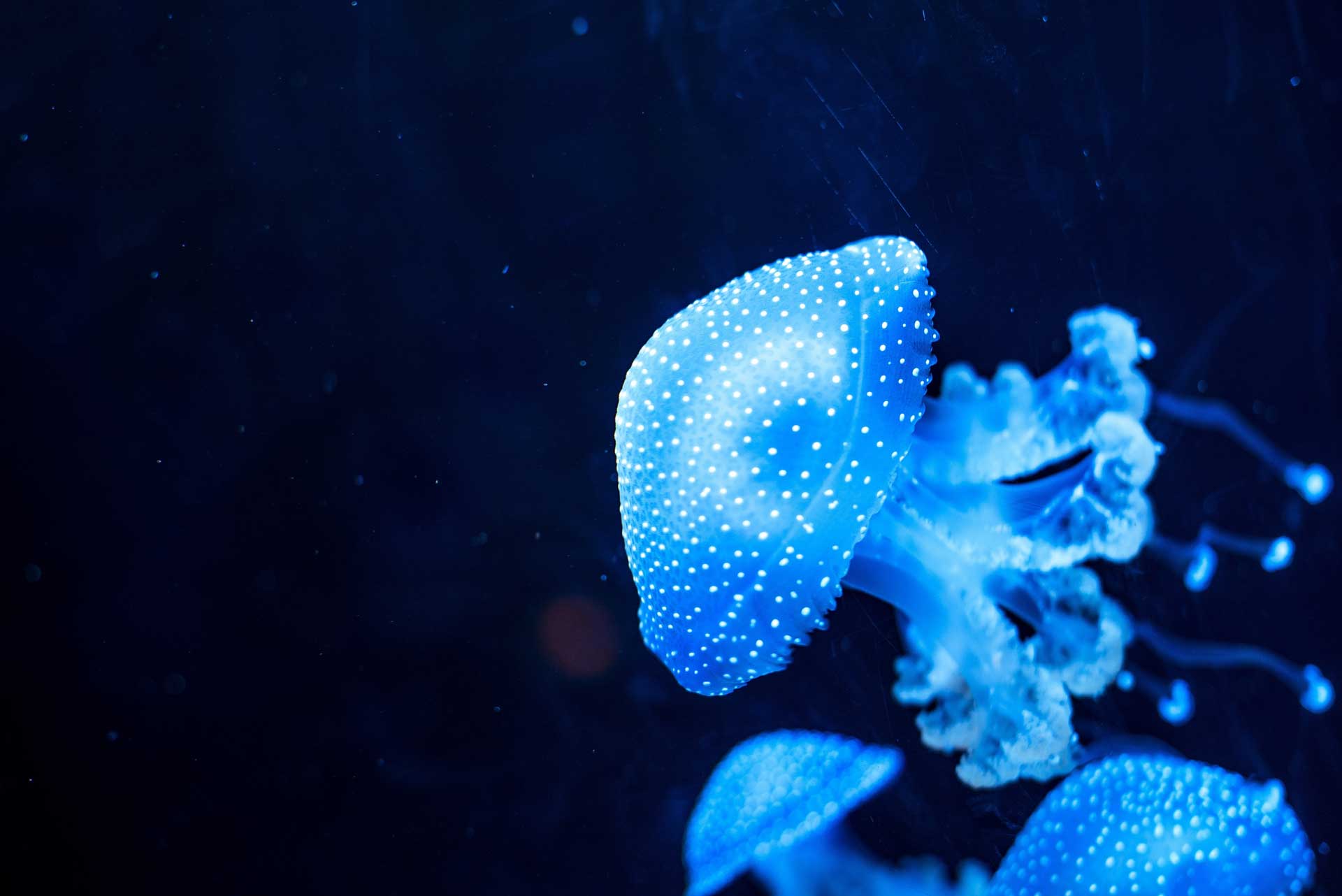
Precious Seed
GUARDIANS OF A HERITAGE
It’s almost like walking into a library and, wandering down each corridor of shelves, casting your eyes along row upon row of books. And then you pick one at random. Instead of books, what you have here are green boxes. Inside, smaller boxes of the same colour with lids that serve as a cover. We choose one that reads “Multiplication 1990 – Accession No. 00265.” We open it and find maize seeds. We are inside a conservation chamber at the headquarters of Portugal’s seed bank, the Portuguese Plant Germplasm Bank (BPGV) in Braga.
At a temperature between 0°C and 5°C, requiring us to wear thermal jackets, we leaf through the history of an endeavour dating back 45 years and which started before Portugal set up its Genetic Plan for Plant Resources. “The written indications here mean that this material was gathered in 1978 and multiplied in 1990”, the institution’s coordinator, Ana Maria Barata, started to explain.
This 120-m2 area houses the active or medium-term collection, “the chamber where we keep the material we work on for farmers and for research. We conserve an original sample and keep another four sub-samples to germinate them over the years and thus control the seed quality”. Next door, another chamber, half the size of the first, is home to seeds for long-term conservation, kept at -18°C: “The first samples have also been here since the start of the bank, but unlike the active collection, they’ve never left the chamber. We rarely open this chamber to avoid temperature fluctuations and to not jeopardise the material.”

MUCH BIGGER THAN A GRAIN OF MUSTARD
Seeds are regarded as sacred for the sake of the food security of future generations, making the people working at BPGV the guardians of this genetic heritage, which is “an inheritance that each country is responsible for conserving”. Vegetables, pulses and cereals are among the many species cultivated; the catalogue of wild species consists primarily of pasture and fodder grasses for grazing, as well as aromatic and medicinal plants; in the collection of fibres, linen is a leading player. Each group has its curator, someone who takes care of the collection: “More than just gathering the plants, you need to know your material. For instance, in cereals, the curator assesses whether multiplication is needed, if the samples are small, if we need to increase the quantity, when to regenerate them, what is required to describe the plants in morphological, agricultural, chemical or molecular terms”, she explained.
The Portuguese Plant Germplasm Bank holds samples of cereals, aromatic and medicinal plants, fibres, forage, pasture and horticultural crops.
These activities are conducted in the field or in duplicates in pots on the eight hectares of the farm home to the BPGV. As well as conserving seeds, the bank works with plant propagation material, in other words, non-seed plants, such as garlic. Fruit trees are another case because the seed does not give rise to a plant identical to the mother plant. When the cultivated plants reach the appropriate stage of growth, the next phase is multiplication. As well as in vitro conservation, there is a cryopreservation protocol for long-term storage scenarios. This is also used in the case of animal germplasm, an area of the bank’s activity which was started in 2007.
SEEDING EXPERIMENTS
In addition to some 45,000 accessions (seed samples with unique genotypes) of 255 species conserved at centres around the country, kept in cold storage, in vitro, cryopreservation or in the field, others are also conserved in situ, i.e. on farmland. This is especially important considering that “when the material is collected and conserved in the bank, the process of genetic evolution is halted. So the two systems of conservation complement each other”, explained Ana Maria Barata.
Sometimes, farmers contact the bank to request access to particular species: “In that case, what we supply are small quantities and the farmer is responsible for conserving and multiplying the seed and then returning it to the bank in a larger quantity. Recently, there’s been renewed interest in certain older varieties – especially cereals for making bread.” An example is trigo barbela, a traditional Portuguese variety of wheat that had been abandoned and is now being used again for artisanal breadmaking.


INSIDE THE NOAH’S ARK OF SEEDS
The Portuguese Plant Germplasm Bank is home to one of the world’s largest collections of maize. The bank also stewards the European collection of this cereal, as well as the collections of other countries in the Mediterranean region. Like most seed banks, the BPGV was set up with funding and technical support from the FAO. Other international organisations it works with include the World Seed Bank in Norway, known as the Noah’s Ark of seeds. “2022 is the third year that we’ve multiplied material that has been conserved at Svalbard to study its viability in a hundred years’ time”, we heard from Ana Maria Barata.
She has been invited to sit on the Advisory Board of the Svalbard Seed Vault. Svalbard is conserving more than a million samples from around the planet. It can be used as the last resource when a natural desaster or war occurs. In 2015, the civil war in Syria destroyed the country’s main seed bank, which had studied drought-resistant seeds. The country had to reclaim its samples to restore crops that were devastated by the conflict.
FROM COLOMBIA TO THE WORLD
Crowned by the majestic Andes and blessed by the Pacific and the Caribbean seaboards, Colombia is one of the most biodiverse countries in the world. The work of researching and collecting plant species, most notably potato and corn, dates back to the 1940s. Currently, the task of conserving, characterising and promoting the genetic diversity of species of interest to farming is entrusted to AGROSAVIA, under the wing of Colombia’s Ministry for Agriculture and Rural Development. Set up in 1994, the Germplasm Bank System of the Colombian Nation is divided into three sub-systems: plant, animal and micro-organisms. The Plant Bank conserves more than 36,000 entries in 56 taxonomic groups, using three distinct methods: in seeds (more than 80% of this genetic library), in vitro (responsible for the core Colombian collection of potato, sweet potato, banana and chives) and in the field (there are nine research centres).

SEED OF THE FUTURE
One of the institutions with which AGROSAVIA has cooperated is CIAT (the International Center for Tropical Agriculture), which also has its bank. Located in Cali, the “Seeds of the Future” is a joint venture between the public and private sectors. It houses the world’s largest collections of beans, yucca and tropical forage, is a depositor at the Svalbard Seed Vault and has made the news because of funding from Jeff Bezos. In March 2022, the project received 17 million dollars from the founder of Amazon through the Bezos Earth Fund. CIAT’s new seed bank occupies nearly 24,000 square metres and can house 250,000 seeds. Since its founding, CIAT has distributed more than half a million samples to more than 160 countries.
THE SECOND GENE BANK IN THE EU
Thanks to its favourable conditions, Poland is one of the most biodiverse countries in Europe: a central location without natural barriers to the west or east, a transition climate influenced by ocean and continental air masses, diversified relief and hydrography, and varying soil types. More than half the country’s land is agricultural, and factors such as more intensive farming, changes in cultivation methods and the growing application of chemical products have contributed to genetic erosion.
The National Centre for Plant Genetic Resources (NCPGR), located in Radzików, is responsible for protecting the genetic diversity of crops. Its main tasks include gathering populations of crops and wild plants belonging to threatened varieties, describing and assessing the materials collected, storing them in a viable state and assuring their genetic purity. Regarding access numbers, the NCPGR is the second largest institution of its type in the European Union, the third largest in Europe and the 17th worldwide. In 2019, it became the 77th depositor at the Svalbard Global Seed Vault. The first deposit contained 406 samples of cereal seeds; barley, wheat and rye. This has grown to more than 8,500 samples.
POLISH INDEPENDENCE BEANS

“Independence Beans” (Fasola Niepodleglosci) have a long history. Also known as “Eagle Beans”, these are white beans with a cherry red marking in the form of an eagle, the bird portrayed on the Polish national emblem. During the partitions of Poland, cultivation of this bean variety was strictly prohibited. Fortunately, people continued to cultivate it in secret and it has survived down the centuries. Known for its delicate flavour, this is one of the ancient bean varieties currently attracting renewed interest from farmers. Conserved at the NCPGR, the “Independence Bean” joined the official list of Traditional Polish Products in 2010. Like other heirloom varieties, it is highly resistant to disease and has modest requirements as regards soil use.
The name “independence bean” comes from the red spots that remind an eagle, the Polish national symbol.


